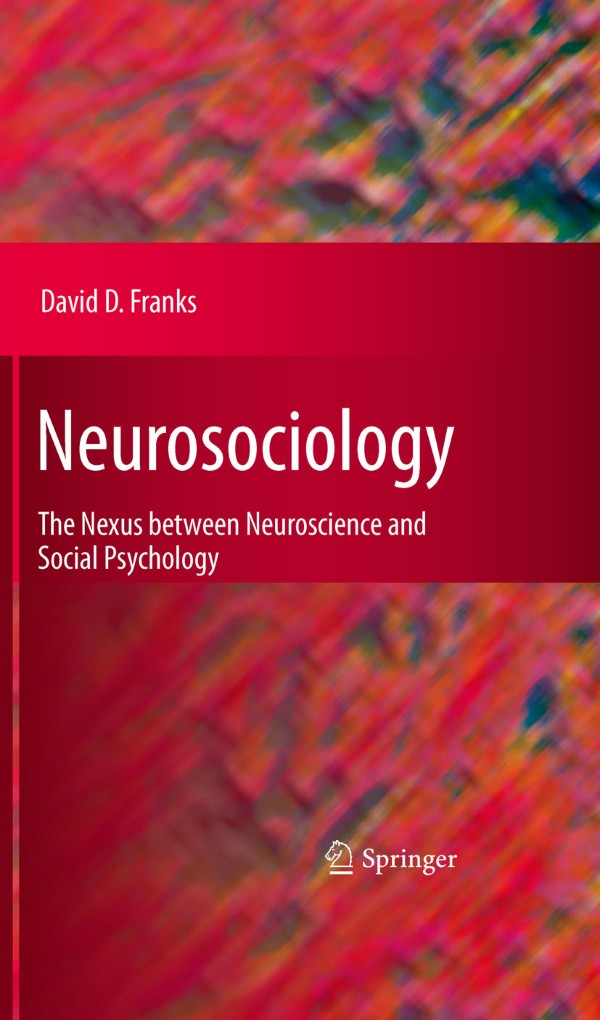
Neurosociology
What is Neurosociology?
Neurosociology is an emerging interdisciplinary field that combines neuroscience and sociology to better understand how neural processes influence, and are influenced by, social interactions, institutions, and structures. The field of neurosociology may explore questions such as “How do neural mechanisms shape human social behaviors?”; “How do social factors, cultural norms, and hierarchies affect neural processes and decision making?”; and “What is the correlation between socioeconomic status and brain development and cognitive function?” Neurosociologists use a variety of research methods, including neuroimaging techniques and quantitative and qualitative sociological approaches to examine these questions, as well as to explore the relationships between brains and group dynamics, social change, and social cognition. By bridging the gap between neuroscience and sociology, this field aims to provide a more comprehensive understanding of how social factors and neural processes interact, shaping human behavior and society, as well as how social forces shape the trajectory of neuroscience research and the development of neurotechnology. We make a distinction here between neurosociology, which is grounded in sociological methods and frames, and “social neuroscience,” which is neuroscience research on social phenomenon. While the two are related, neurosociology is marked by its foundation in the discipline of sociology.
Take a look at the videos below to learn more about neurosociology:
Learn from this short “Crash Course” style video on the origins of social neuroscience, the brain regions and activity involved in social processes, and why understanding the brain’s view of our complex social world.
Follow Professor Rengin Firat of University of California, Riverside as she appears on The Annex Sociology Podcast to discuss her work using brain scans to examine emotional dimensions of social class, race, ethnicity, group behavior and more.
In this video with neuroscientist Mahzarin Banaji, Professor of Social Ethics at Harvard University, Banaji discuss the evolution of the field of social neuroscience, the usage of fMRI in social neuroscience research, our perception of social context, and delves into the implications of human consciousness.
Learn from qualitative sociologist Dr. Oliver Rollins as he analyzes issues of racial identity, racialized discourses, and practices of social difference in neuroscience and neuroscientific technologies. Dr. Rollins uses neuroimaging to examine anti-social behavior and crime, as well as social power differences and inequity.
What are the pathways to pursuing a career in neuroanthropology?
Career pathways available in neurosociology remain limited. At present academic research and teaching are the primary ways to explore neurosociology. In their roles as researchers and educators, neurosociologists can develop new neurosociology programs, publish research, conduct studies, teach students, and innovate new ways to apply techniques from a range of disciplines to continue shaping the field. Academic researchers generally hold PhDs in relevant fields, and for neurosociology deep training in sociology is a must, plus additional training and experience in a field related to cognitive science.
In the future, neurosociologists may lend their expertise on social behavior, cognitive processes, social change, and group dynamics to analyze policies that affect social development, and determine policies that may or may not be successful based on their knowledge of social phenomena and human behavior. But at present opportunities at the intersection of neuroscience and sociology are primarily in the academic space.
Education in Neurosociology
As neurosociology is a relatively new field, there are presently no undergraduate or graduate programs tailored specifically to neurosociology. Rather, students will need to create their own curricula, for instance studying both social neuroscience and sociology and bridging the two through joint projects.
Learn more about neurosociology:

“The Social Brain: Sociological Frontiers” by Sal Restivo
This book introduces the idea of the social brain networked in the world. The author’s foundational thesis is that humans appear in evolution always, already, and everywhere social.

The brain, self and society: A social-neuroscience model of predictive processing.
In this article, leading neuroanthropologist Greg Downey discusses the interplay between human evolution and culture, highlighting a new project funded by the John Templeton Foundation. He emphasizes the blend of biological and cultural influences in shaping humanity and urges a holistic understanding beyond viewing culture as mere mental information.

Neurosociology: The Nexus Between Neuroscience and Social Psychology
This is one of the first books to address the intersection between neuroscience and sociology. It describes for a sociological audience what neuroscience can add to their research, especially social psychologists.

